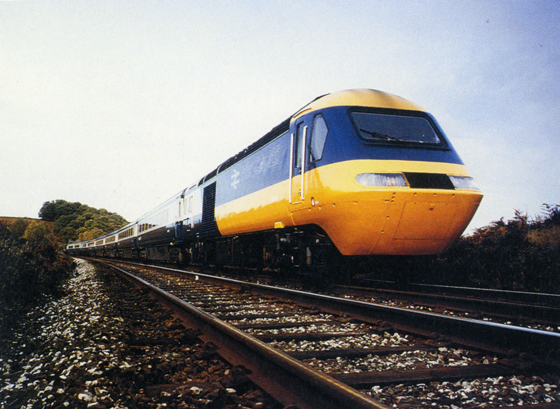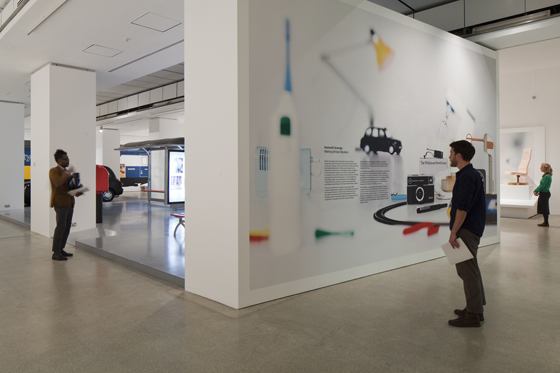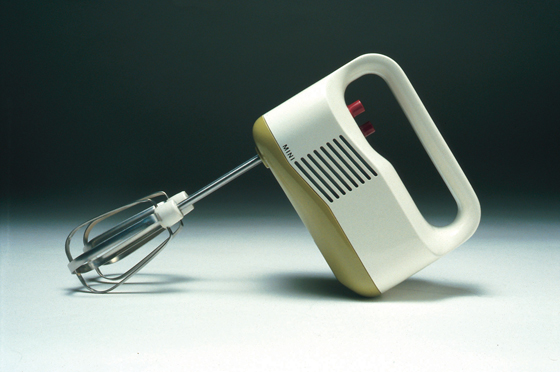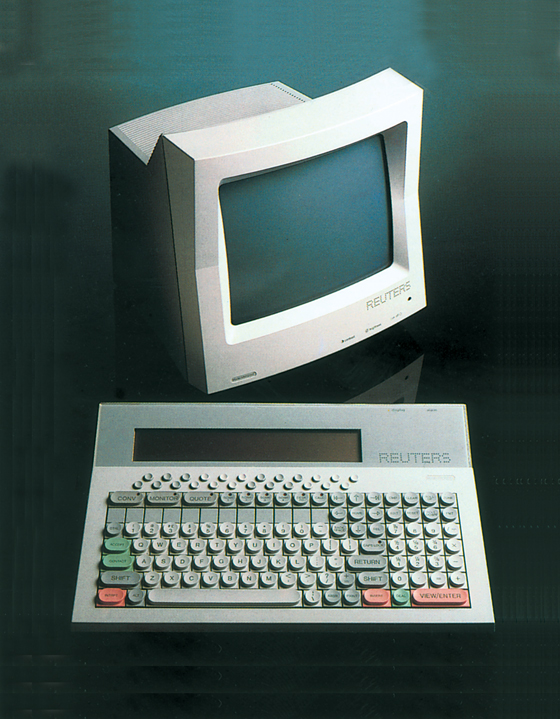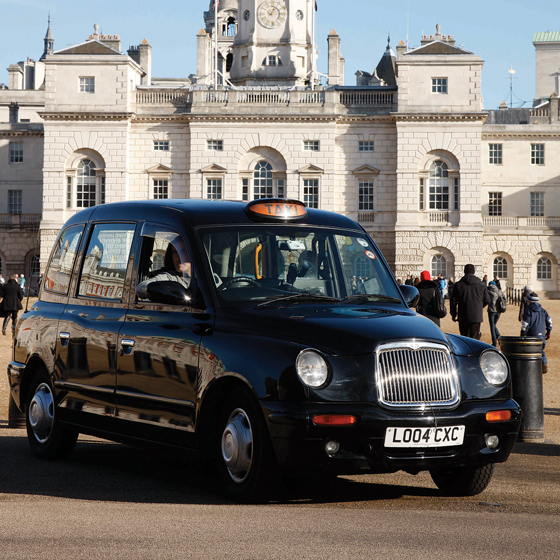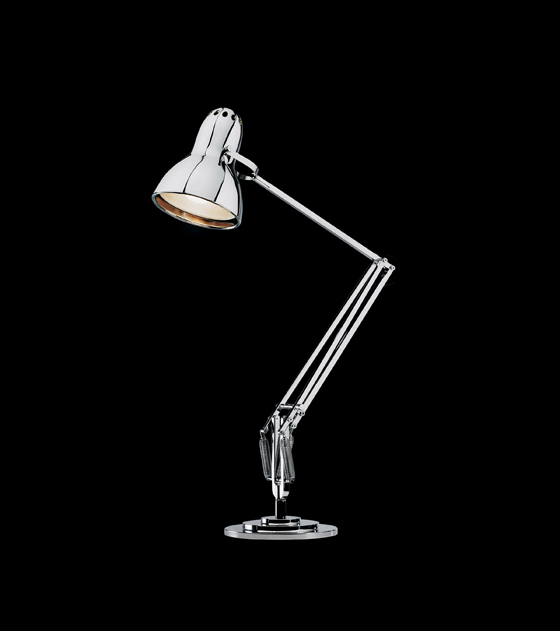When We Were Modern: Kenneth Grange at the Design Museum
Text by Simon Keane-Cowell
Zürich, Switzerland
20.08.11
A retrospective of the work of industrial-design master Kenneth Grange at London's Design Museum celebrates the prolific designer's contribution to shaping British material culture, while encouraging us to think about the purpose and responsibilities of product design today.
In these challenging times of global economic uncertainty and ecological pessimism, the fundamental question of 'What is design?', or rather 'What should design be?', becomes ever more pertinent. We consume mass-manufactured objects in far greater quantities than we need to. This much we know.
It remains to be seen whether the growing discourse around a more responsible approach to design manufacturing, generated in part by the manufacturers themselves (or, more specifically, their marketing departments), one which encourages us to form more sustainable, more intimate relationships with products by buying fewer of them and holding on to them for a lot longer, translates into something that looks like a viable reality.
What is clear is that the role of the designer, of the industrial or product designer, is changing, as the emphasis on the creation of finished, hermetic objects broadens to encompass projects that explore and show process to a greater extent, or involve the design of services.
Against this economic and cultural backdrop, it's tempting to read the latest London Design Museum show – a retrospective of the work of respected British product designer Kenneth Grange as, at least in part, an exercise in nostalgia. For most of his career, Grange was working in an age where the enterprise of designing objects for industrial production was an unapologetic one, unattended by many of the thorny ethical questions that it is now.
'Kenneth Grange: Making Britain Modern' at London's Design Museum. The exhibition is designed by James Irvine and Jasper Morrison, with graphics by Graphic Thought Facility; photographer Luke Hayes
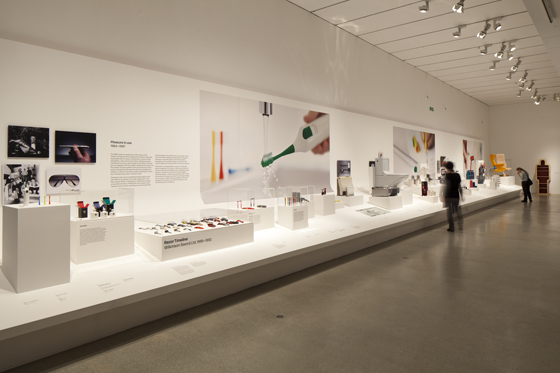
'Kenneth Grange: Making Britain Modern' at London's Design Museum. The exhibition is designed by James Irvine and Jasper Morrison, with graphics by Graphic Thought Facility; photographer Luke Hayes
×The exhibition, entitled 'Kenneth Grange: Making Britain Modern' and which features some of the most iconic and familiar designs of the 20th-century British material landscape, is equally unapologetic in its celebration of the designer's contribution to shaping the everyday lives of generations of Britons (most of whom, undoubtedly, have never heard of the name Kenneth Grange).
And rightly so. To deny, in retrospect, the role the now octogenarian Grange has played through his formally, materially and technologically innovative work in helping to create a national self-image characterised by modernity and progress would be churlish. Grange, harnessing the solid manufacturing base that existed in Britain in the 1960s and 70s, was putting the good into 'good design' long before the term fell out of fashion. The result: the stuff of daily living – cameras for Kodak, pens for Parker, food mixers for Kenwood – that at once set the standard for the future of democratic design.
Open-handled electric iron for Morphy Richards, 1971
Cutting his teeth on the 1951 Festival of Britain, where he worked as an architect's assistant on the Sports and Homes pavilions, Grange went on to design the Kodak Pavilion for the 1958 Brussels World Fair, which would see the start of a long-term collaboration with the manufacturer. Others followed, Morphy Richards (irons), Wilkinson Sword (razors) and Ronson (lighters) among them. In 1972, Grange, together with Alan Fletcher, Theo Crosby, Colin Forbes and Mervyn Kurlansky, founded the multidisciplinary consultancy Pentagram, a company that any self-respecting historiography of British design wouldn't be complete without mentioning. Today, the company has offices in New York, Austin and Berlin, as well as London.
Second-generation Reuters monitor and keyboard, 1985
Like those 20th-century American industrial-design greats, Raymond Loewy and Norman Bel Geddes, Grange didn't limit himself to certain object types or shy away from large-scale projects. So, on the one hand, he gave us pocket cameras and razors, and, on the other, the Intercity 125 train, the exterior and interior layout of which he designed in 1968 and which was launched in 1976. While its strong aerodynamics, so evocative of the shape (both literally and rhetorically) of things to come, may appear somewhat modest over three decades later when compared to the dramatic stylings of other high-speed trains, they are nonetheless emblematic of Britain's relationship with modernity, being at once new and confident, yet not so radical or challenging that they alienated the public. Moreover, the fact that Grange's trains are still in service today is testament to their value.
It comes as no surprise, perhaps, that the exhibition was designed by British designers James Irvine and Jasper Morrison (with graphics by Graphic Thought Facility). Morrison in particular has argued, through both his work and his writings, for a greater emphasis on design that focuses on, and attempts to improve, the everyday, manmade environment, a role it once performed well, but from which it has, of late, become detached. For Morrison, it's a question of creating (often modest) products that are integrated into daily life, and whose primary purpose is to enhance it, an idea he expresses through his discourse of the 'super normal', developed in collaboration with Japanese product designer Naoto Fukasawa.
The fact that Kenneth Grange's work – the appliances, the transport projects, the small items you find you in your toiletry bag – comes effectively unauthored, in the sense that these products were and are purchased and consumed because of how they work instead of the fact they were designed by Grange, makes them ideal candidates for Morrison's vision of how our contemporary material landscape should look. They represent at once the familiar and the progressive. How very British.
Kenneth Grange, now in his eighties and who was recognised in 1984 with a CBE, continues to teach at the Royal College of Art
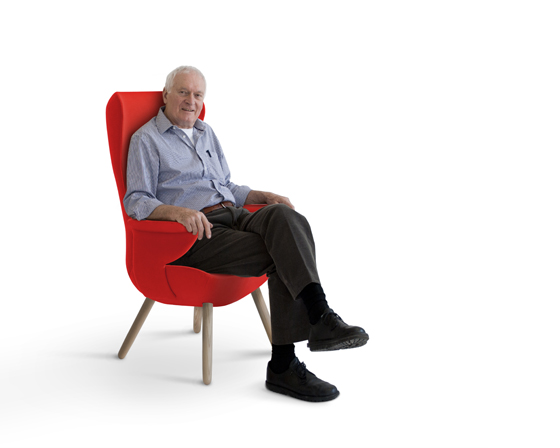
Kenneth Grange, now in his eighties and who was recognised in 1984 with a CBE, continues to teach at the Royal College of Art
×....
'Kenneth Grange: Making Britain Modern' runs at the Design Museum, London, until 30 October.
....


